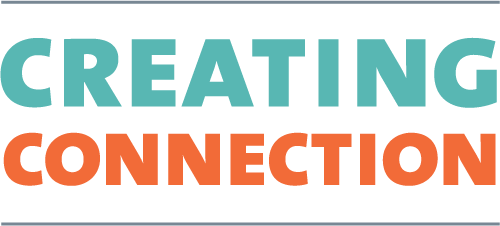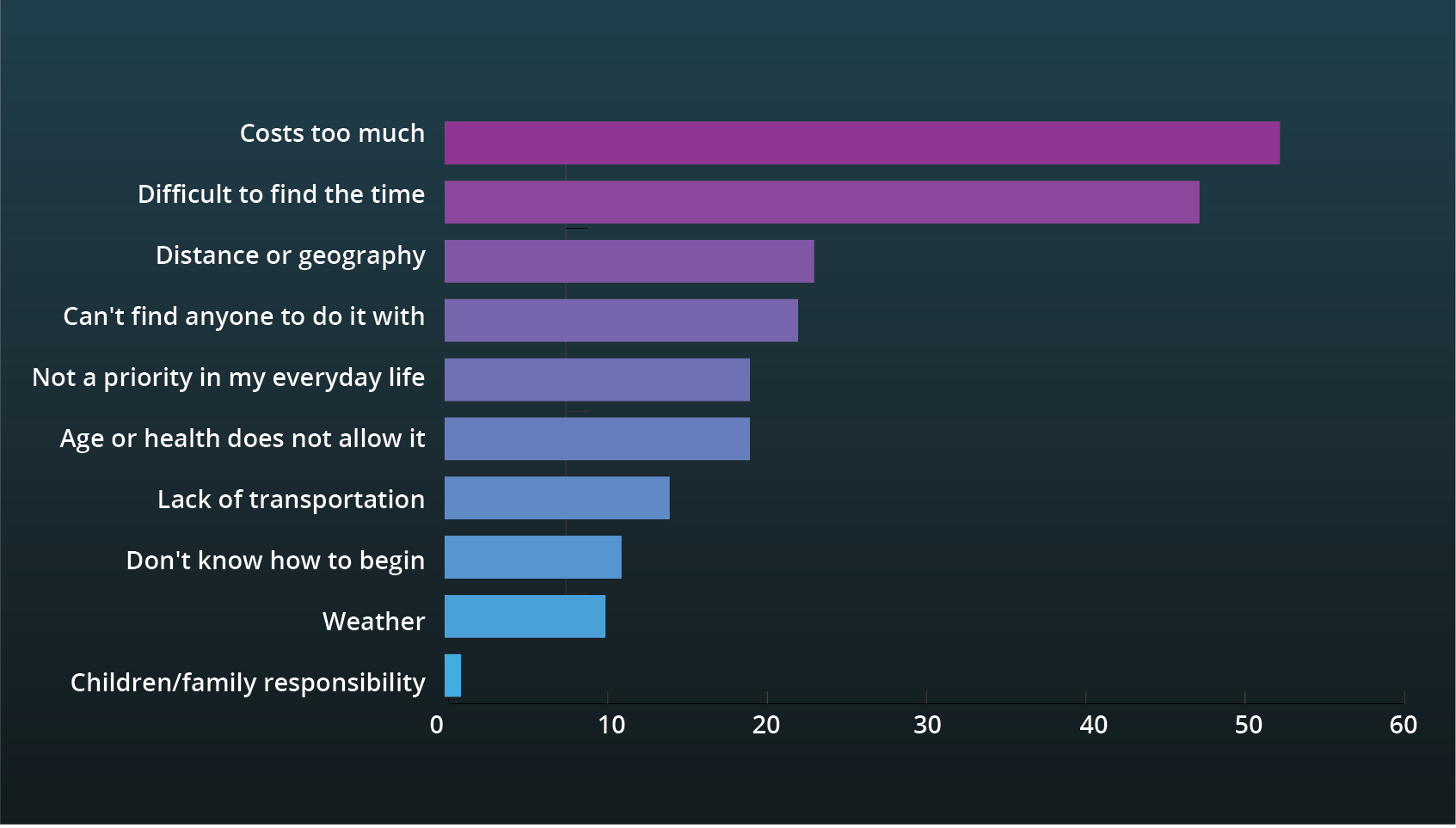Barriers
Researchers have been studying and documenting barriers to arts participation for years. Through those inquiries, they have identified both practical and perceptual barriers to engagement with formal arts experiences: most notably, time, money, and lack of companionship.
Our research validated these barriers for both formal and informal engagement with creative activities and offers new insights into the kinds of experiences that will — and won’t — align with public values and interests.
To the extent you would like to [engage in creative activities more often], what gets in the way?
Percent of Americans who selected with this statement. Source: Creating Connection: Research Findings and Proposed Message Framework to Build Public Will for Arts and Culture. Arts Midwest and Metropolitan Group, 2015.
Key takeaway: offer interactive experiences
In addition to these well-researched barriers, our study revealed that many people find that the arts and cultural experiences available to them are too passive for their liking.
While there is no question that many people enjoy the opportunity to experience arts and culture from their seat in an audience or the bench in an art gallery, our priority audiences are looking for more opportunities to engage actively in creating or experiencing art. Their inability to find or access these opportunities tends to reinforce the perception that arts and culture are not relevant in their own lives.
What’s next: Breaking down barriers
When the public perceives arts and culture as elitist or as a luxury, it decreases their motivation to prioritize those activities. Thus, our challenge is to position creative expression as central to our lives by showing how it is aligned with existing, core values. That effort will require that the arts and culture field pursue a series of strategies:
Explore and offer active opportunities for audiences to connect with one another
Identify and support efforts to increase access to creative expression outside of formal arts experiences
Demonstrate how connecting through creative expression can reduce social isolation and improve social cohesion
Access our success stories to see how organizations across the country have navigated these barriers, provided new programs that align with public values, and increased access to creativity.
Images: Showing the Experience by Noriko Slusser courtesy of San Jose Museum of Art; Practicing Radical Hospitality courtesy of City Lights Theater; Reducing Social Isolation courtesy of Vern Riffe Center at Shawnee State University; Creating Belonging courtesy of Pendleton Center for the Arts.





